I HAVE A very specific premonition of my own death. While the logistics are fuzzy, the end is disturbingly detailed in my subconscious.
I’m walking, or maybe fishing, on the mucky edge of a swampy pond. There’s a commotion in the malarial water, but I’m too late in reacting. Before I know it, a monstrous reptile, a bull crocodile or alligator, has my leg and is pulling me in. What sticks in my cerebral cortex isn’t a sensation of pain, or any regrets at the end of life, but the sickening sense that the animal at the other end of those gangrenous teeth has no soul. It’s not evil or devious, just a cold-eyed executioner. Among my last thoughts as I disappear in the bloody froth is the discouragement that my body will sustain such a loveless creature.
I’ve had an uneasy fascination with large reptiles since I was a kid. Snakes don’t bother me, much, and turtles amuse me, but alligators and crocodiles are to me the very picture of death, which maybe accounts for my fatalistic relationship with them. I was maybe 9 or 10 when my father shared with me a similar dread about the disposition of his own corporeal remains. He feared that his body might expire in the woods below our farmhouse, where it would be devoured at night by loathsome possums. My dad really hated possums, not for any specific crime they had committed, but I think because they are similarly soulless as crocodiles.
One of my favorite stories from this time of life was Rudyard Kipling’s “The Elephant’s Child,” a parable contained in the delightful collection of colonial-era “Just So Stories.” I first listened to these stories on a 33 rpm vinyl record that my parents owned. In the recording, Sterling Holloway—the voice of the original Winnie the Pooh—narrated a strange and useful yarn about the risk and reward of curiosity.
In the story, the elephant’s child roams across southern Africa, asking every animal it encounters the same question: What does a crocodile have for dinner? And every time it asks, the elephant’s child gets spanked for his “’satiable curiosity,” first by his parents, then in turn by ostriches, giraffes, hippos, and pythons until it finally meets a crocodile along the banks of the “great gray-green, greasy Limpopo River, all set about with fever-trees.” The crocodile grabs the stunted nose of the young elephant, which pulls back with such vigor that his nose grows in length and circumference and musculature. This is how, in Kipling’s telling, elephants got their trunks, by being curious and adventurous, and by ignoring the possible perils in the water.
A Nuisance Crocodile
Kipling’s story sprang to mind as I was preparing for my own travels across southern Africa last month. I was headed to South Africa to hunt plains game with Chad Schearer, who handles media relations for Bergara Rifles. I had a specific goal: to hunt a common reedbuck, an obscure antelope native to the tall grass along the waterways and upland streams of central South Africa.
But first we intended to hunt a newish concession in the Limpopo Province, about three hours north of Johannesburg. Chad had gotten there a few days before my arrival; I was just leaving the U.S. when he called.
“Wanna hunt a croc?” he asked, although he full-well knew the answer. “At least one has shown up in a waterway on the concession we’re hunting, and apparently it’s eating a lot of goats and other animals. The PH is looking for someone to remove it.”
I told Chad I’d get there as soon as I could.
Apparently the presence of the depredating croc was top of mind for Egbert Boon, the owner of Sensational Safaris and our PH for the week. Egbert was raised on the Limpopo farm where we hunted. His father was a livestock veterinarian who started a cattle feedlot on the property, which occupies several thousand acres of thornbush and zebra grass in the rugged Waterberg mountains. But Egbert and his brother, Petir, were much more interested in the impala, kudu, and nyala that roamed the wilder corners of their farm. They started the safari company several years ago to guide hunters on their own place and those of their neighbors.
I had just arrived, dealing with both jetlag and building expectations, and was putting my luggage in a guest cottage when Boon asked if I was ready to find the problem reptile.
“I’d like to sight in my rifle first,” I told him. “How far do you expect shots at a crocodile?”
He thought we’d be well within 100 yards, and I wanted to make sure my rifle, a Bergara Wilderness Ridge Carbon chambered in .300 Winchester Magnum, was shooting where I aimed the Konus Evo scope atop it, especially important after the abuses of cross-Atlantic travel and airport baggage handling.
On the long trip to Africa, I studied shot placement and hunting advice for large Nile crocodiles, and two imperatives stuck in my mind. First, never shoot bull crocs in the water, implored several sources, including my old friend Kevin “Doctari” Robertson, whose best-selling book, “The Perfect Shot,” details shot placement on most species of African big game.
The problem with shooting a croc in water is that, even if killed instantly, it will often sink into the treacherous depths, making retrieval problematic.

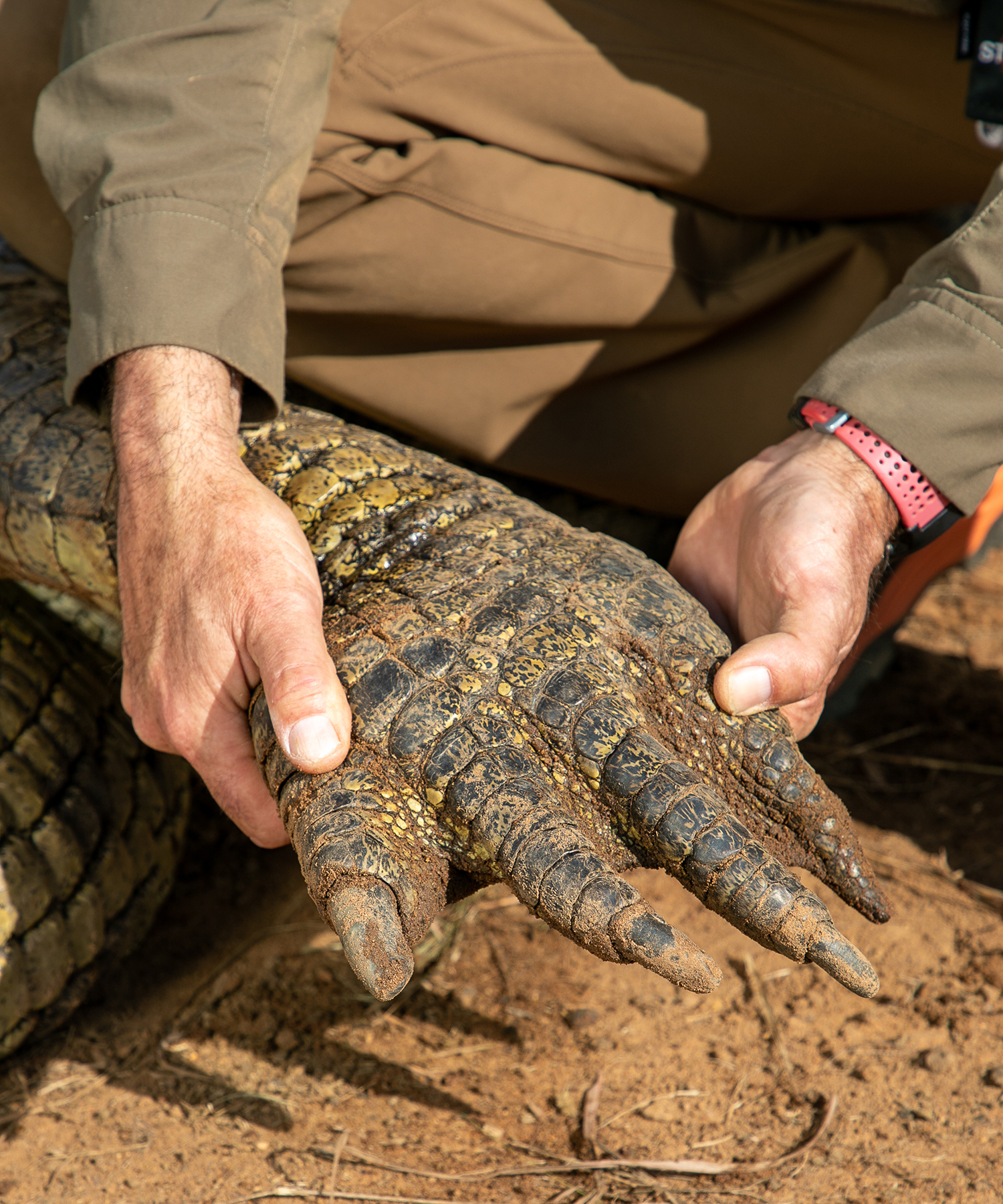
“In hunting a crocodile, it is of vital importance that the animal is immobilized and anchored on your first shot, otherwise it will disappear back into the water and you will never see it again,” write the authors of “The Practical Shot,” a field guide to shot placement on African game.
It’s important to place a bullet in the golf-ball-sized brain, and because shooters hidden along the riverbank are often at the same elevation as the reptile, Doctari and other sources suggest a side-on shot to the head, using the rear curve of a crocodile’s iconic “smile” as an aiming point. But they stress the difficulty of that shot, and reports of near misses almost always result in an unretrieved lizard—and wounded crocs can be notoriously cranky. Veteran croc shooters advise that if shooters can get an elevational advantage, they should aim for the rearward top of the crocodile’s skull in order to immobilize the lizard brain and short-circuit the slow, twitchy, unpredictable death that characterizes the end of most large reptiles.
“Backup shots: Place through shoulders and hips,” writes Doctari. “Use solids for backup shots.”
I also recalled various hunting stories of big crocodiles and alligators through history. One of the most visceral accounts is from Theodore Roosevelt, who encountered big crocs during his African safaris and later Amazon gators during his 1913 and 1914 expedition into Brazil’s equatorial forest. His experience charting what was called the “River of Doubt” caused TR to dub bull crocodiles as “most formidable reptiles” and revived my own subconscious death-memory.
Encounter with a Lizard
My rifle sighted and my excitement ramping, Egbert gathered the lot of us—Chad, Chad’s son (and ace videographer) Walker Schearer, and PH Hanro Smith—in his Toyota Hi-Lux to drive to the reptile-infested water. I pictured a slow-flowing suctioning river, with malignant pools occupied by hippos and twitchy impalas sipping from the mud-slick banks.
We parked out in the bush and walked toward the water. Instead of a river, this was a tiny pond, maybe two acres, shaded by overhanging acacia trees and crowded with blooming water hyacinth and cattail hornworts. It resembled frog water back home, where a blue heron or kingfisher might hunt in the shallows.
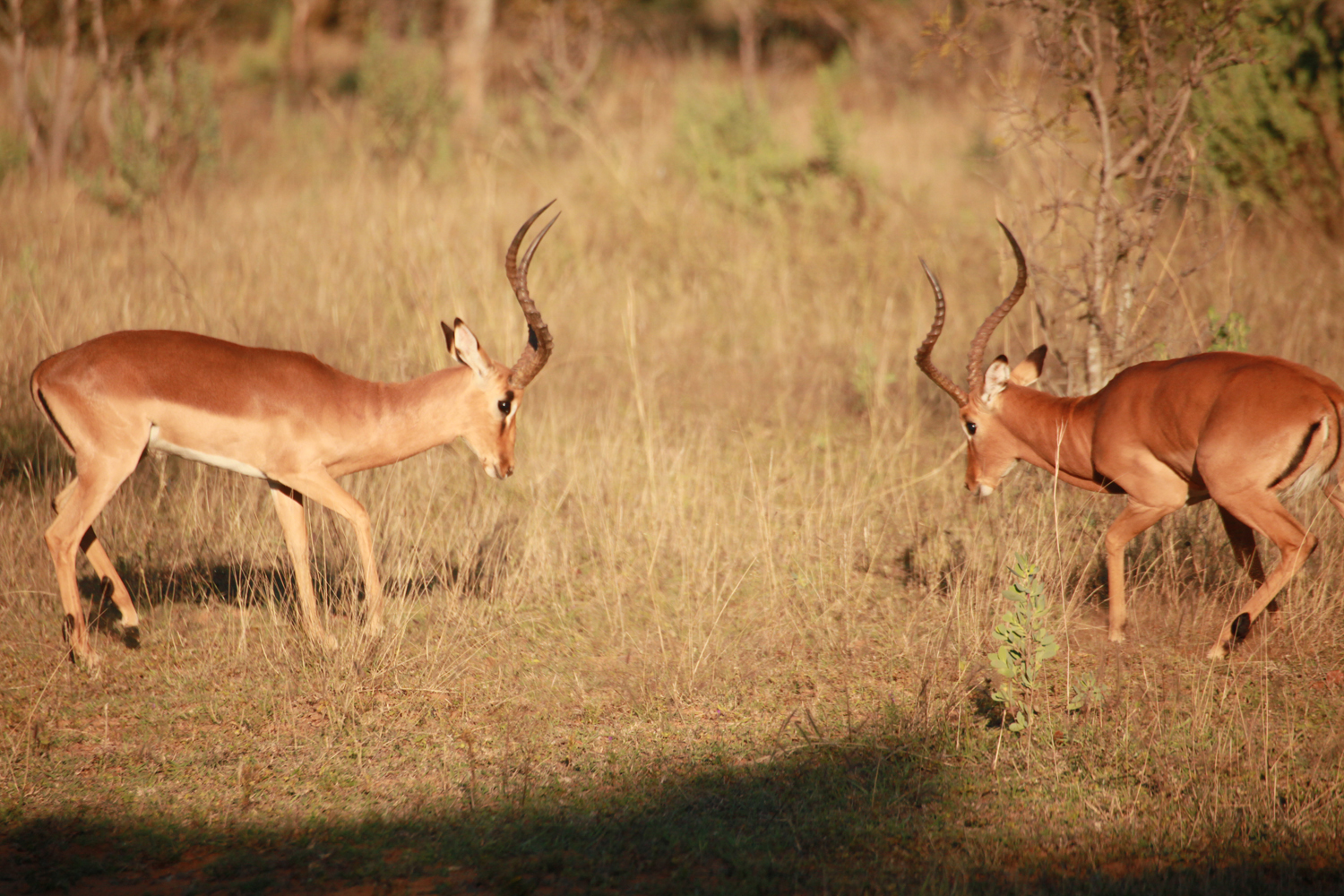
Hushed and walking on tiptoe, we peered into a shallow defile with the pond at its bottom. But we were either too loud or too late. Boon tried to get me in place to make a hasty shot on a crocodile that was rapidly leaving its sunning spot on a gently sloping bank. But the croc had smelled or heard us and slipped into the water, along with a companion, long before I could get a good view of them.
I saw only the sweep of a scaled tail, enough to reignite my childhood phobia. But it also flipped a cerebral switch. Instead of fearing this place and that swamp monster in its depths, I felt a familiar stirring. I was hunting. Despite its unfamiliarity to me, I would figure out this animal and its habits. And I would do just about anything necessary to encounter the reptile on my terms.
At sunset that evening, I turned a consolation hunt for an impala into a full-on adventure, when I hit low on my first shot and had to blood-trail the antelope first into a thicket of eucalyptus trees and later into a tight grasp of thornbush. Following only barely perceptible spoor in the feeble light—a sharply incised right hoof print here, a faint smear of blood on knee-high grass there—Hanro and I caught up to the flushing impala in a barely illuminated opening and I swung through the movement, luckily connecting through the inside of a going-away ham and putting him down in his tracks.
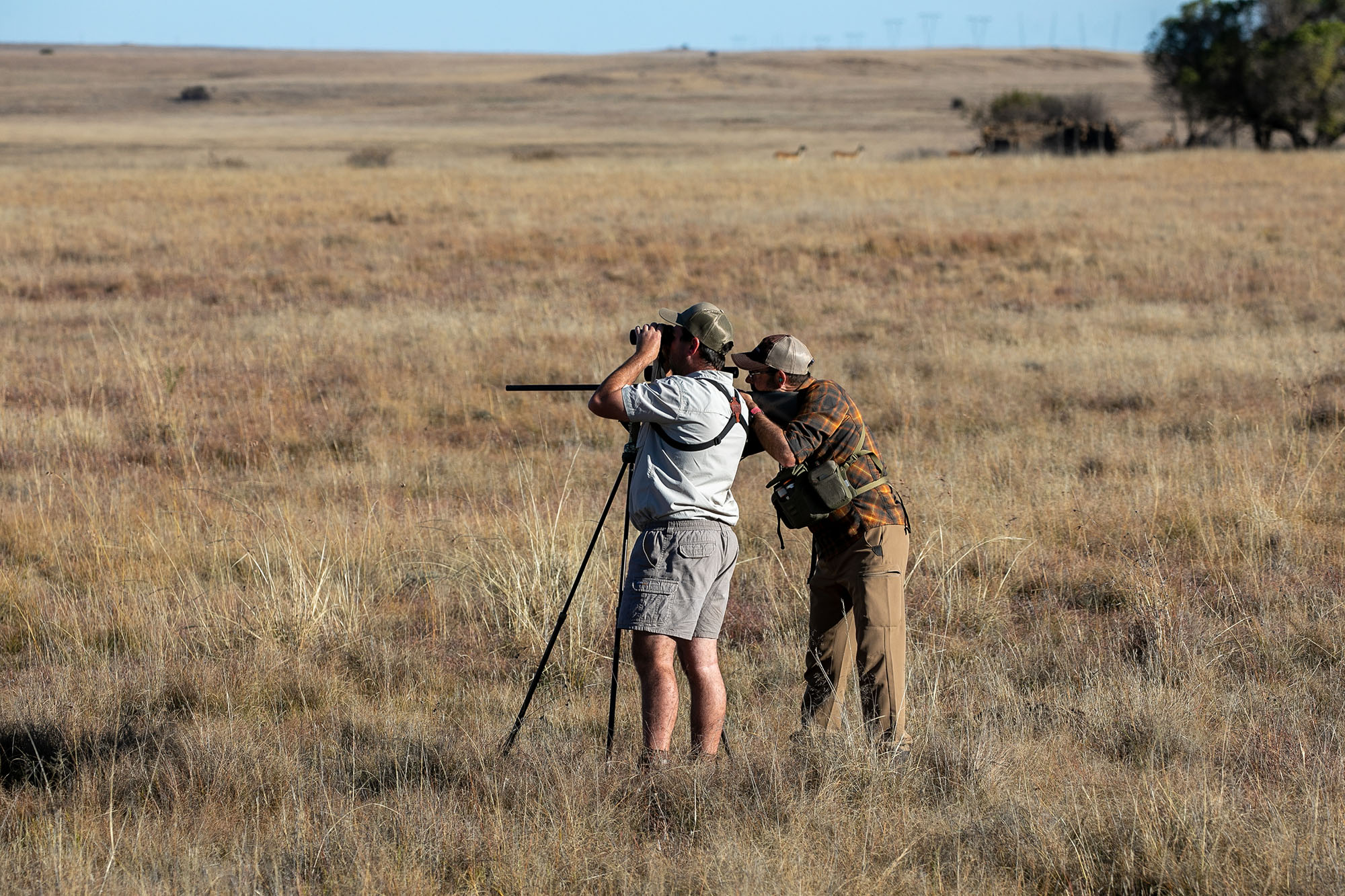
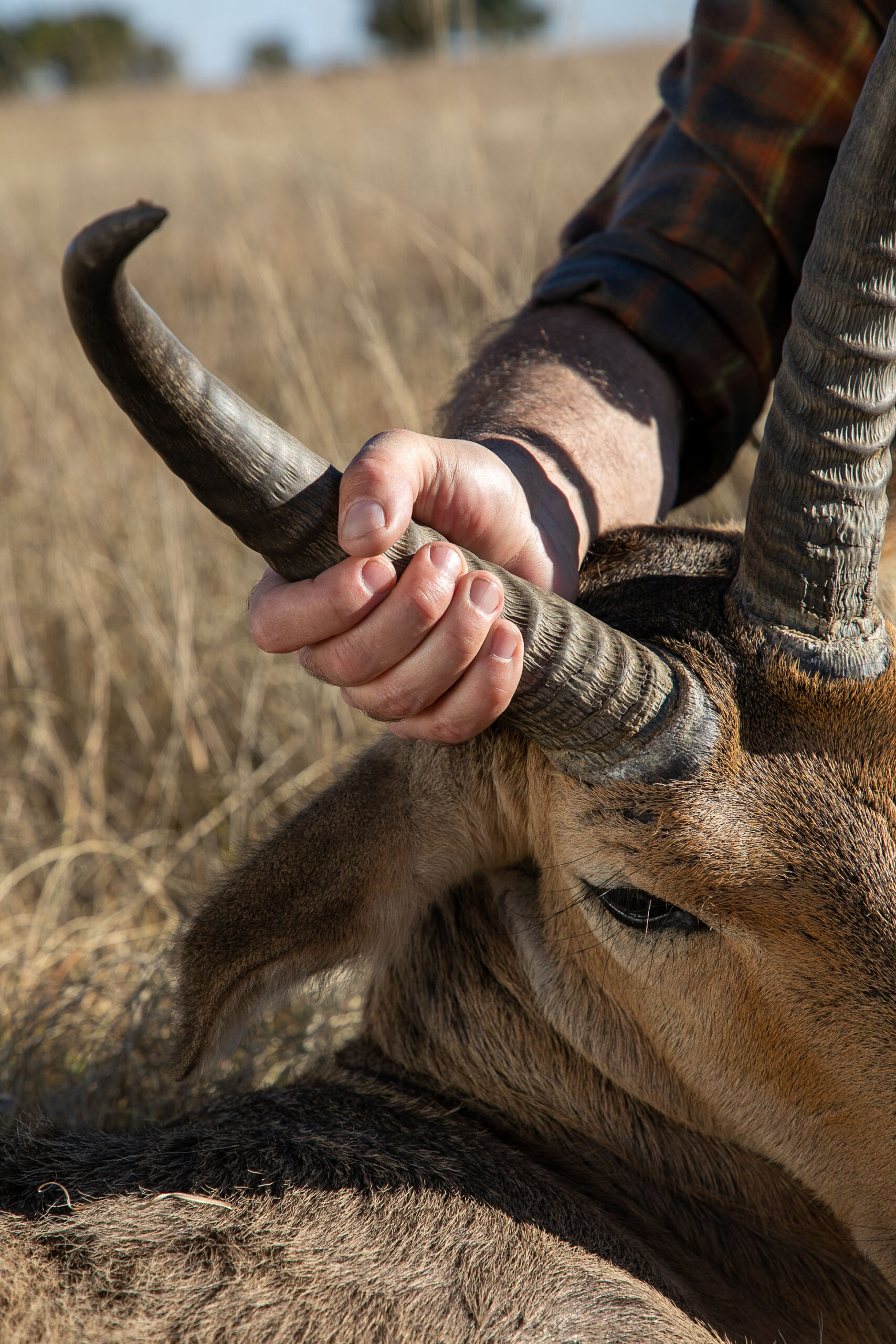
That night, over a late dinner back at the lodge, I asked Boon about his previous crocodile hunting experience, and the origins of this particular specimen. About the first, he was vague. Boon had hunted crocs, he said, and had “managed to bring to bag one or two.” He noted that at this elevation in the Waterbergs, crocs are rare. It gets too cold in the winter months to sustain a large reptile, so any encounters would have been seasonal and unexpected.
That was precisely the case with the crocodile at hand. Trackers had spotted it a couple weeks earlier, and the Boon brothers reckoned that it had migrated in during South Africa’s lingering drought, which has dried up a number of waterways. Boon said that large crocodiles, moving overland between isolated wetlands, can easily push through wire fences meant to contain most of Africa’s huntable game.
“They either find an opening where fences cross creeks, or they get their noses in the wire and just make a bigger opening,” said Boon. “We once were hunting eland and spotted a 12-foot croc crossing through the bush. I wouldn’t want to be the tracker who followed an animal into that cover. Those crocs can move surprisingly quickly, even out of the water. And in the water, they simply have no predators once they reach a certain size.”
How large was the one on his property? The one I intended to kill the following day?
“Hard to say,” said Egbert. “I’d put him at 10 to 11 feet, on the low end.”
And how widespread are crocodiles in the Limpopo Province?
“I can’t say they’re everywhere. They’re scarce enough that they certainly get your attention,” he said. “But along the lower rivers, they’re common. I’d bet it would surprise people in villages and townships if they knew the number of crocs that live in and around them.”
Lying in Wait
Next morning turned cold, and Boon noted that crocodiles wouldn’t emerge from the water until the heat of the afternoon, so we looked for other game. The Boon farm holds impressive numbers of wildebeest, sable, and impala, and between stalks we inspected a new game-proof fence Egbert and his father were commissioning.
“We’re building a springbok pasture,” explained Boon. “We get lots of requests to add springbok to our hunting packages, and by having them on the farm we wouldn’t have to travel” to fill that part of a plains-game bag. Most springbok properties are in the Free State, a good 5 to 6 hours south of the Waterbergs.
Among my last thoughts as I disappear in the bloody froth is the discouragement that my body will sustain such a loveless creature.
Twelve-foot-high game-proof fences—usually electrified—are a fixture of southern Africa’s hunting concessions. They keep unwanted predators out, but more to the point, they keep huntable game inside. That trophy nyala or gemsbok? You’re nearly sure to get it because of that fence. While I’ve come to terms personally with fenced hunting estates there, on my several trips to Africa I’ve always looked for opportunities to hunt animals that aren’t intensively managed, or which can find ways through, or under, those serious fences. Warthogs have it figured out, and so have tiny steenbok and duiker. And so, apparently, have cross-country crocodiles.
After lunch, we returned to the pond. This time, I brought a foam cushion to make a long sit more bearable. I was determined to post up on the high bank above the pond until the crocodile either emerged to sun on the open bank or until he lifted his telltale nostrils above the water, hopefully exposing his tiny brain. My research indicated that even the largest crocs need to come up for air every 45 minutes or so, and I intended to be there and alert to his rise, even if it took all afternoon.
I had been on watch maybe an hour when the wind suddenly shifted. Just as I felt the breeze on the back of my neck, I saw a deep swirl in an end of the pond. The croc had evidently winded us and disappeared from the surface. I waited another few hours, watching foot-long bass fin in the shallows, and then cold air and a chilly night ended things. This lizard was becoming even more interesting to me.
Perils in the Water
The next day broke warm so we decided to hunt for wildebeest in the morning as we made our way to the croc pond. Once we set up on the bank—too many of us for my liking, given the scent plume of the previous sit—we scanned the water with binoculars. Surely the scutes of his cranium would break the surface, or we’d see those telltale nostrils, each as big and black as a Labrador’s nose.
I wondered how deep this pond was. I had noticed a masonry dam at its lower end, some 10 feet tall, so I guessed the pond was at least that deep at its widest point. But below the dam, the creek slowed to a trickle and then dried up altogether. Who knows how far down or upstream the next pond was, but Egbert had told me that his neighbors had lost livestock and had seen a pair of big crocs in their waterways. Was this a roving marauder? Would it stay in this pond for long, or had it already moved along to another property?
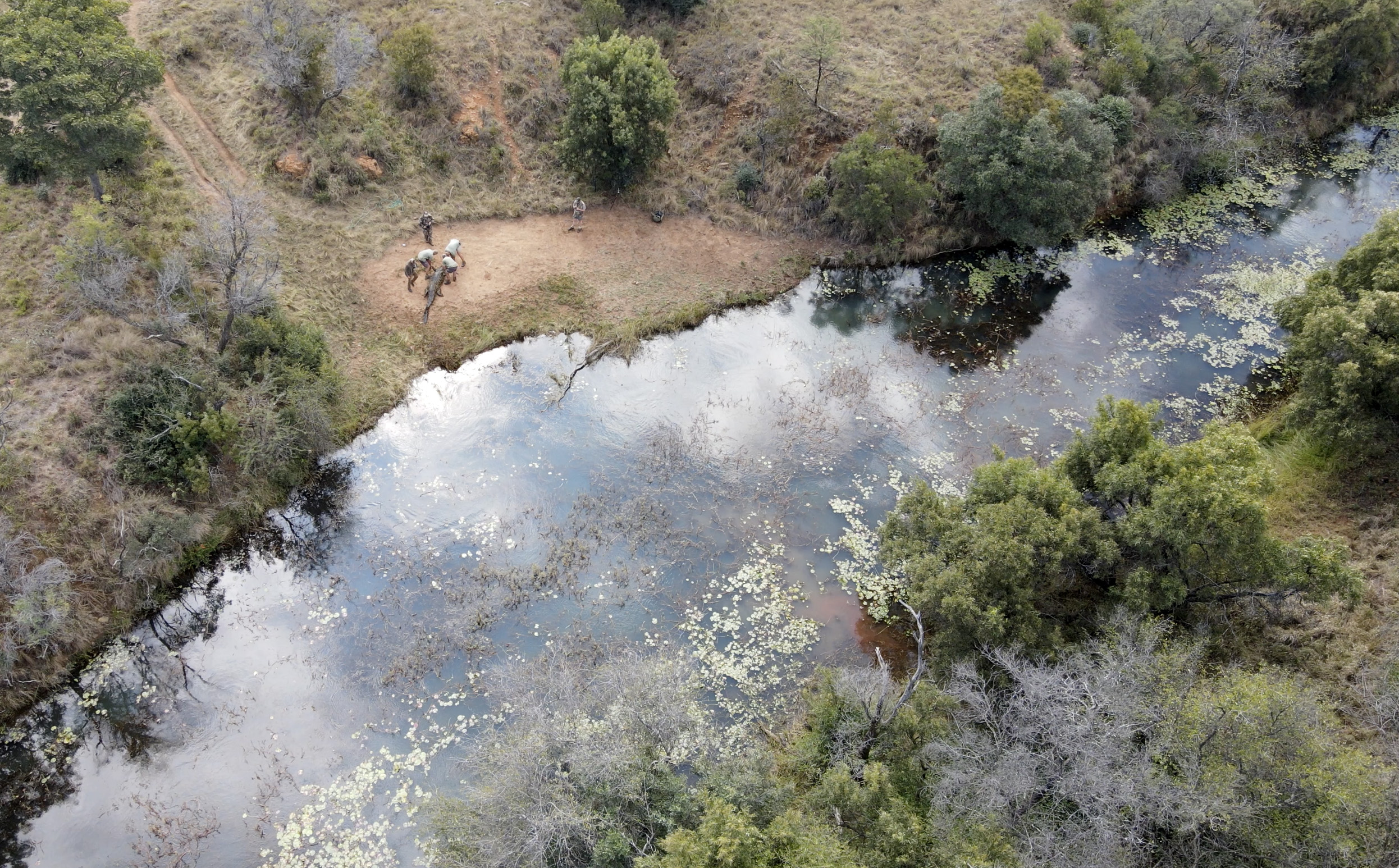
As I watched the limpid water, I also wondered how large this reptile was and, channeling the Elephant’s Child’s curiosity, how it had grown to its dimensions. I had read that 10-foot bull crocs can be as old as 40 years, and the largest specimens stretching to 18 feet and weighing a full ton, growing long and hungry on a diet of fish, aquatic critters, and, as Egbert suggested, by foraging on goats and the occasional careless impala. The dense brush along this pond would surely hold bushpigs and bushbuck, both favorite prey for Nile crocodiles.
But I also read about villagers, nearly always youngsters, taken by ambushing crocs. Was this one a maneater? Could I lure it out of the water by pre-enacting my death ritual, walking the bank as a two-legged decoy?
I was lost in these thoughts when Boon, sitting in the turpentine grass to my right, hissed and motioned me to stay low. He pointed to the water, and then indicated I should crawl around him and set up my shooting sticks. Walker Schearer, on video duty, followed as I moved to see a portion of the pond that had been invisible from my original spot. Staying quiet and low, I aimed my rifle where Boon pointed, and there I saw it, the crenellated head of the croc, nose pointed away from us, suspended in the water like a mud-colored Goodyear blimp hovering above a ball game.
I was sure of my shot but worried that the croc would suddenly and silently drop out of sight in the water. When I heard Walker say his camera was on the animal, I aimed at a spot on top of his head just behind his eyes and fired. With a suppressor on my rifle, my muzzle lift was minimal, and with my scope at 3-power, I could see the shot and its aftermath. The back of the croc’s head opened like a cleaved melon, and the big lizard writhed in the water, revealing his astonishing length as he thrashed his powerful tail. Instead of sinking to the bottom, the crocodile’s death spasm sent him directly into shore, an impressive amount of blood coloring the shallow water.
Recalling my research, I immediately fired another shot, aiming to put as many holes in the big lizard as possible, and was cycling another round when Boon broke into a laugh. “Enough. Enough. Enough. He’s dead. You got him!”
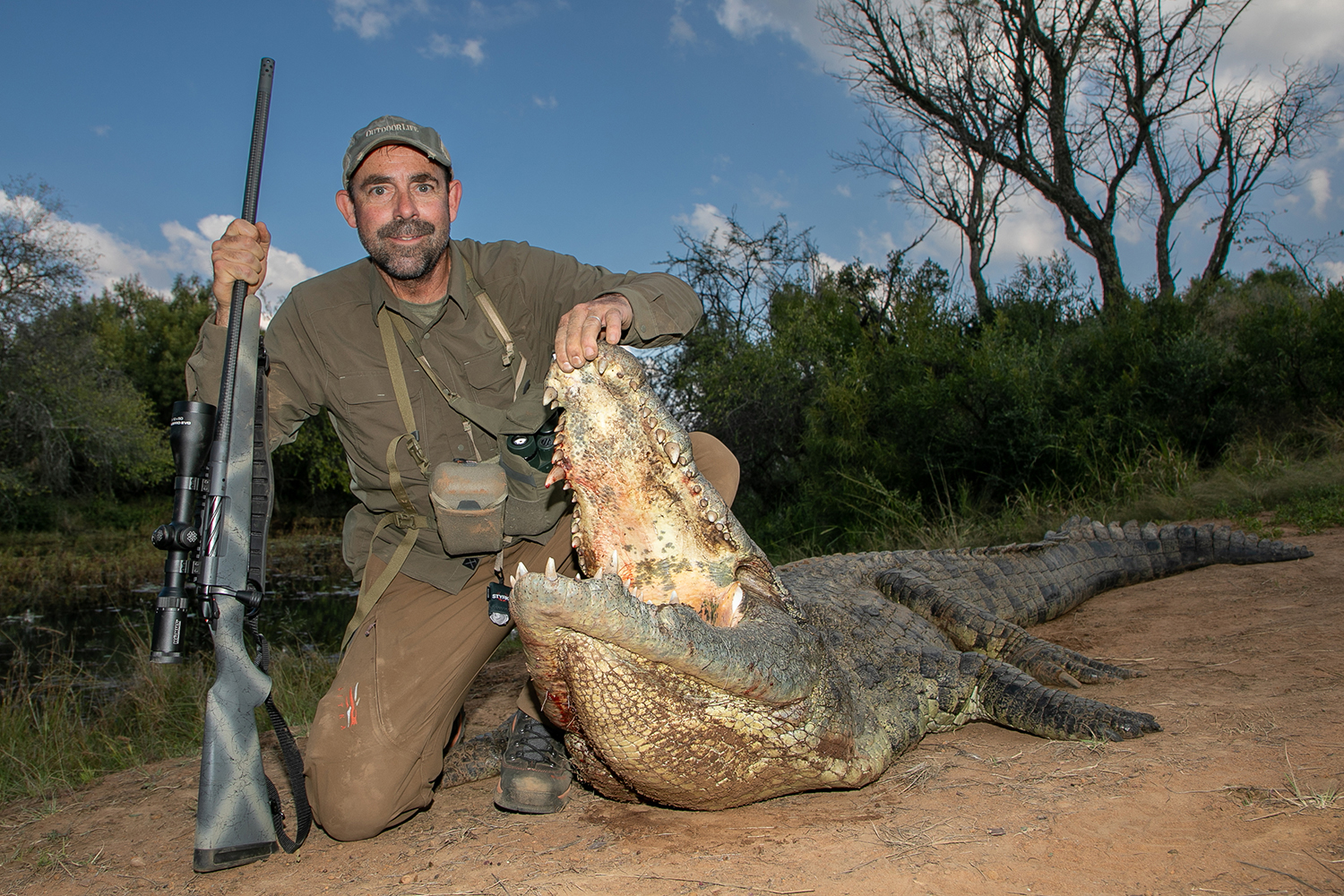
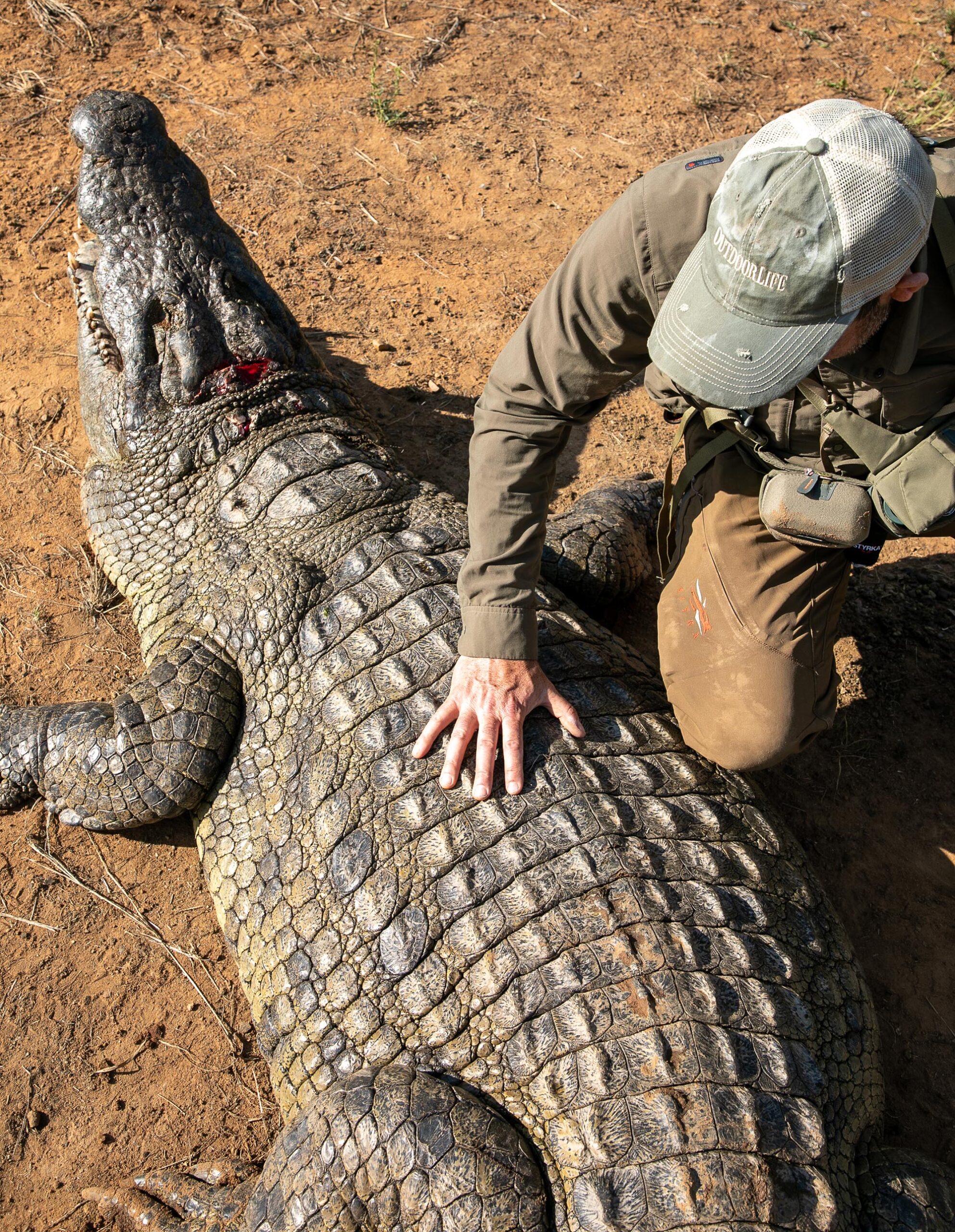
Curiosity, Satisfied
I don’t know the last time I was both so rattled and so relieved to anchor my quarry. A few birds squawked in the bush. I heard warthogs snorting and fighting several hundred yards downstream. But the silence of the moment was palpable.
As our posse picked our way down to the pond’s edge, I kept my rifle at the ready. I was still dubious that the cold-blooded lizard was really dead. Maybe he’d have delayed animation like the rattlesnakes I’ve killed, their problematic heads detached from their bodies, both parts still writhing around like zombies for the next half hour. But the croc, beached directly across the pond from us, didn’t move, and I started to appreciate his dimensions, a gray-green tail thick as a linebacker’s leg and that blunt anvil head pushed up on shore. I looked at the head wound through my binocular. I was shooting 180-grain AccuBonds in custom reloads from Armscor Ammunition, and the combination was visibly, lethally, impressive.
I poked at the rubbery membrane at the back of his throat that I imagined as the gateway to oblivion for untold numbers of antelope and goats.
Now that our task was retrieval, the exotic croc was reduced to any other big-game animal whose carcass would have to be muscled around and dealt with. Petir joined us. Hanro volunteered to walk around the pond, gamely navigating dense thornbush that went right to the water’s edge, while Egbert fetched a rope and grappling hook from his safari truck. This should be entertaining, I thought to myself, as I understood that Egbert would pitch the hook across the pond, Hanro would cinch it to the lizard, and then we’d drag the body back across the deep water to the sloping bank where we stood. I pictured the rope coming loose and the croc sinking, or another croc making retrieval sporty, or something else going tragically wrong.
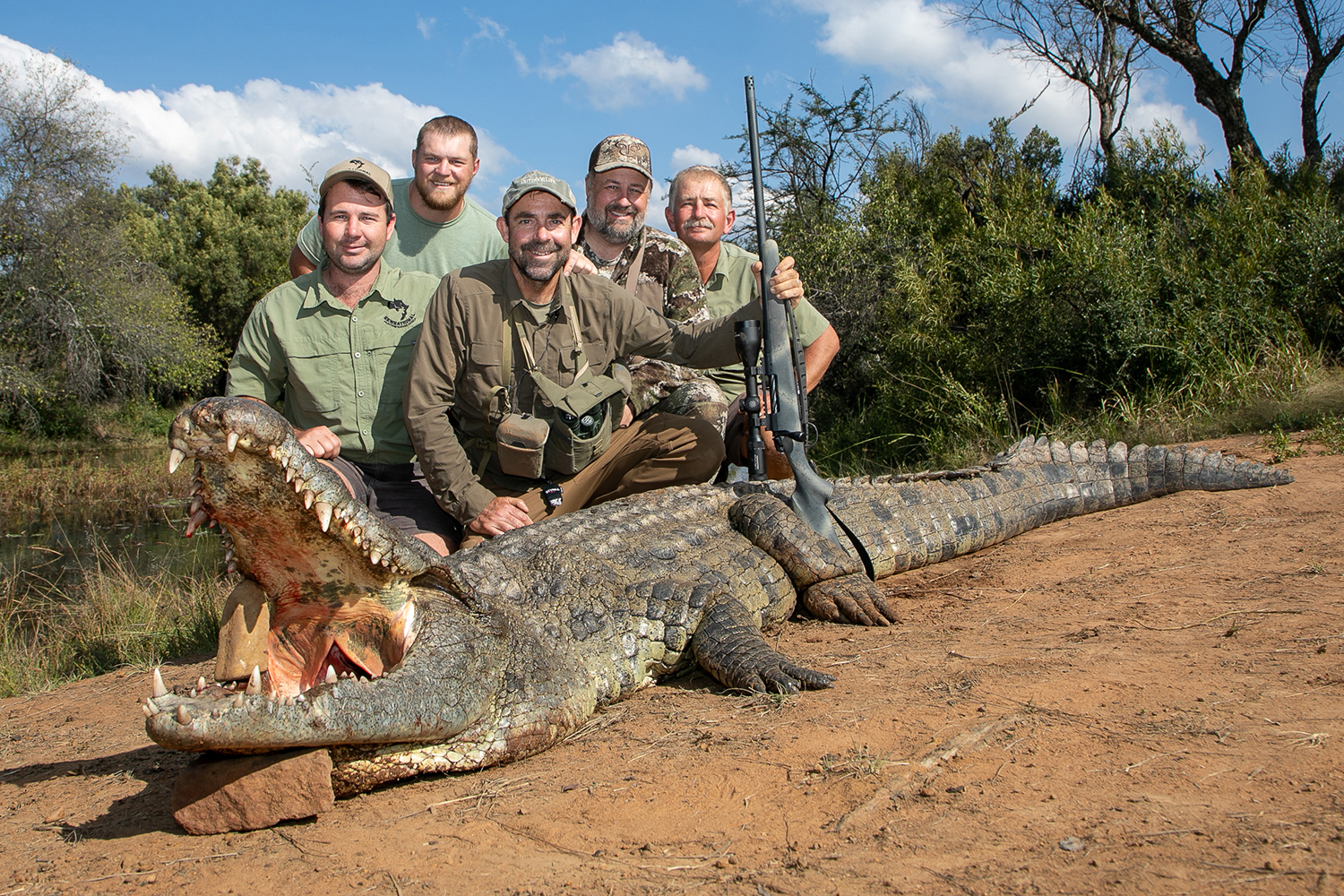
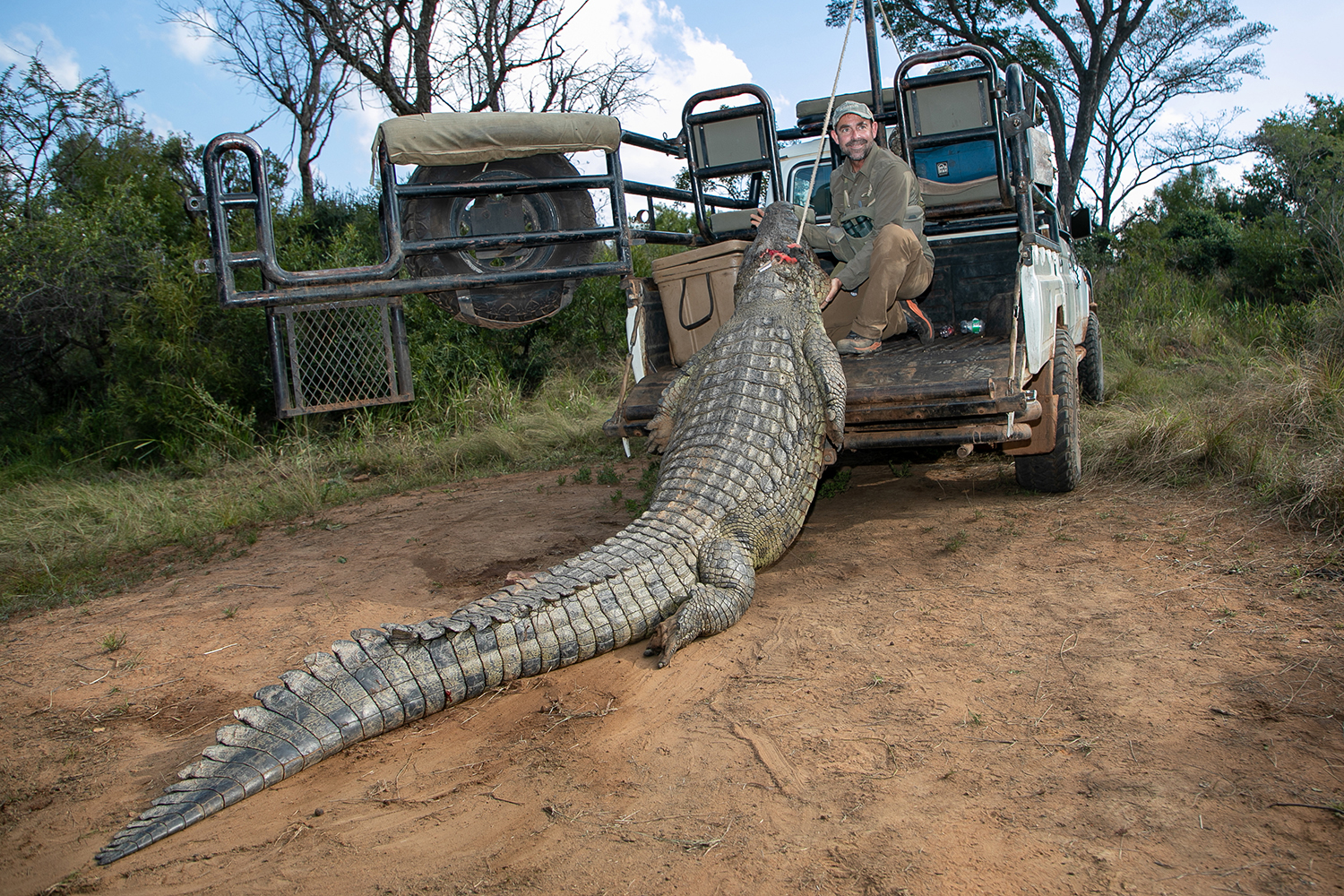
But none of that happened. Instead, we pulled the croc through tangled aquatic vegetation, yarded him up on shore, and arranged him for photographs. It took all of us, and I figured the dead weight between 500 and 600 pounds and his length at just over 13 feet. We inspected the filthy teeth inside, as Kipling described it, his “musky, tusky mouth.” I poked at the rubbery membrane at the back of his throat that I imagined as the gateway to oblivion for untold numbers of antelope and goats.
As I inspected the hand-sized scutes along its armored back, and its massive claws, I saw the world through the bull croc’s slitted eyes. At its size and ferocity, it had no predators here. Only a hunter’s bullet, or maybe an injury from a rival croc, might deliver death. Could this cold-blooded carnivore imagine that he would be admired by a Missouri farm boy, finally free of his own death premonitions on the banks of a crocodilian waterway a half a world away from home, his hands holding open the maw of a giant lizard?
I’d like to think that Rudyard Kipling himself might appreciate the poetic possibility of that specific moment, the unexpected reward of curiosity.
Read more OL+ stories.
